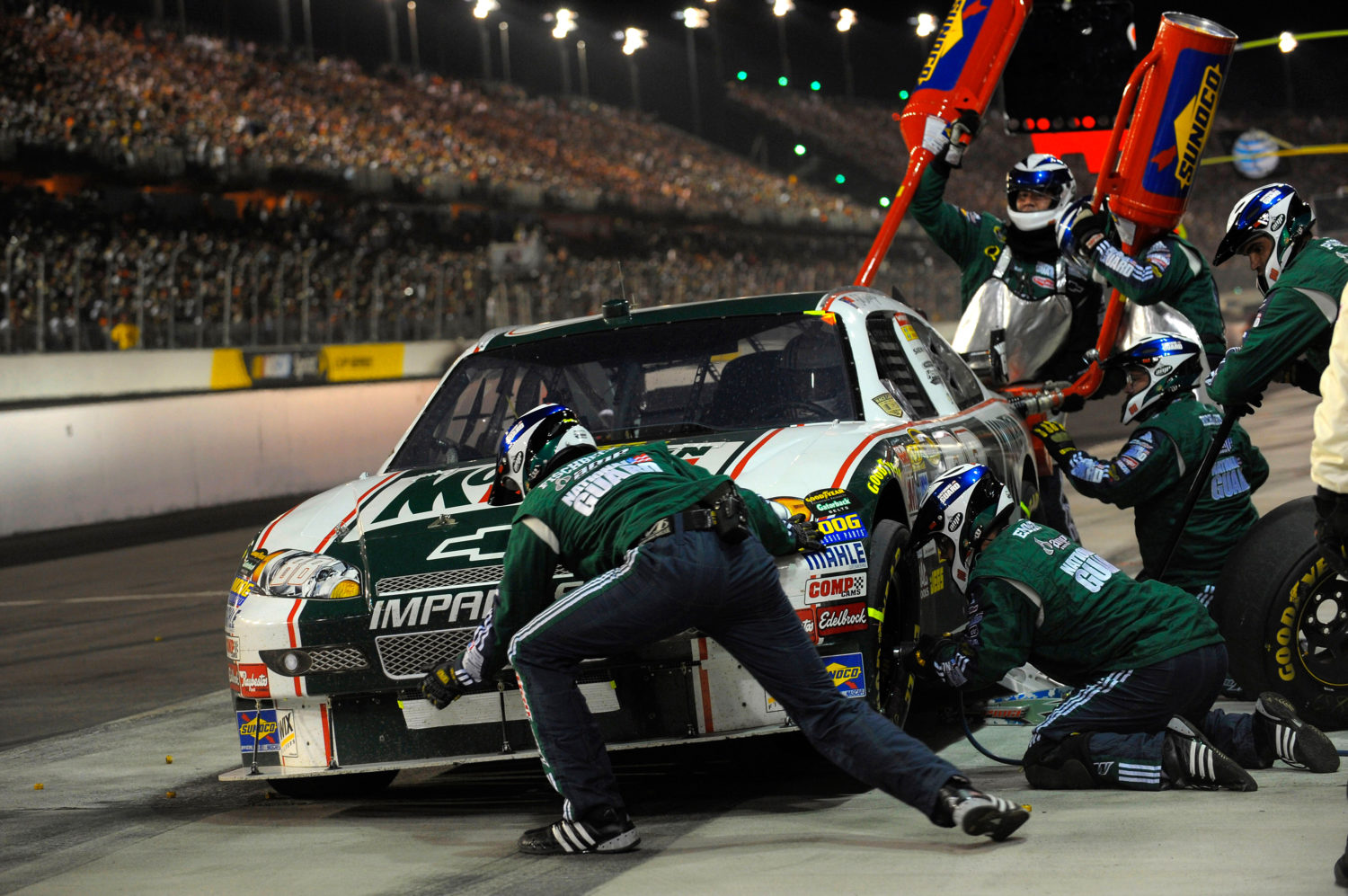The Gas, Oil, Driver, Pit Stops and Maintenance Crew: Operating Costs

Junior at Darlington
When looking at a big ticket item like a production inkjet device, the one with the lowest price may seem like the best choice. But, as I said in my previous post, the cost of the machine is the big number (the race car) that will play the smallest role in total cost of ownership. It’s the operating costs that can make or break your return on investment.
Once again, in the interest of presenting this information in digestible chunks, I’m going to focus on operating costs[i] and how those may cause you to reconsider the importance of some inkjet options. I can’t emphasize enough that there are many cases where spending a little more up front may save you multiples of that investment over the life of the device. My goal is to help you understand key cost drivers and how your buying decisions impact results.
In the next post in the series we’ll cover the assumptions that drive the calculation of the operating costs.
Operating costs, or running costs, include everything that it takes to keep that inkjet device up and running including materials, maintenance and manpower. Let’s look at choices and related costs.
Ink and Other Fluids
There is no right inkjet ink, there is only the right one for the type of work you do and the type of paper you want to print on. Ink is a major driver of running costs, but like other aspects of inkjet, choosing the cheapest ink may not result in the cheapest running cost. Aqueous pigment, oil-based pigment and UV inks keep more pigment on the surface and may hit your color requirements with less ink volume on certain papers. However, in other cases, the dot gain from aqueous dye based inks may result in better coverage with less ink.
Estimating ink usage is a complex topic all by itself and the only way to really know is to test. First, find the options that will meet your color standards on the necessary media and then work with the OEM to get ink consumption numbers for comparison. There is no substitute for running real jobs on the paper(s) and devices you are considering and capturing the actual ink usage. You must be sure that the test runs reflect the quality levels AND the productivity level you want to achieve. You also need to know how much ink is used simply to keep the heads wet. There can be a big difference in ink consumption between technology that recirculates ink to heads instead of just spraying, and where heads can be capped when running in mono-only mode. Pay careful attention to differences in jetting patterns and spit bars that use ink to keep the heads wetted. This consideration is particularly important when considering a device with MICR ink since MICR is the most expensive ink.
Of course there are more fluids than just ink. There are maintenance fluids, coatings and primers as well. Different print head technologies may use more or less maintenance fluid. Pre-coating, spot-coating and post-coating add a whole additional layer of cost. They may be necessary to achieve your color requirements on untreated stock or to add durability to the finished product. In countries where inkjet treated paper is more expensive or less available than in the US, coating systems are easily justified. However, in many cases plain paper plus coatings plus additional drying energy are not cheaper than comparable inkjet treated/coated paper.
Paper
Finding the paper that will give you the quality you want at the best cost can make or break the economics. Your choice of paper will directly impact the amount of ink you consume. For other than the most demanding applications, it is less expensive and quality-neutral to use an inkjet-ready paper when ink and energy consumption are included in the calculation. However, in a mixed process environment (offset + toner + inkjet) you may have economies of scale and cross-process matching requirements that warrant using “plain” paper and a coating device. [ii]
Wastage
The amount of paper wasted during start up can be a big differentiator for continuous devices – particularly those with a wide web. Companies that make frequent paper changes leaving partial rolls need to look carefully at paper handling options, splice detection and the ability to print full quality during ramp-up. Sheet fed devices have come on the market that may be sound alternatives when frequent paper changes are required.
Power
Energy efficiency can be a big deal – particularly in application-segments with high coverage requiring intensive drying power. Some manufacturers have done an exceptional job of redirecting heat from other areas of the device to drying chambers, thereby reducing energy needed for drying and also reducing energy needed to cool the print engine itself. Often, devices have a standard drying option plus variations available based on need. Make sure you are asking about, and testing with, the drying options that are most suitable to your application segment.
Maintenance
The cost and structure of your maintenance plan is crucial to the success of your inkjet investment. Pay particular attention to how print heads are covered and definitions of jet outs or other quality issues that would require print heads to be serviced or replaced. If your quality requirements are high, you need to make sure that you are covered for the level of quality you need to deliver. How many jet-outs can you live with? Look at the break-down of self-maintenance versus OEM maintenance and the expected level of downtime.
People
Because inkjet devices are high-efficiency equipment, you can run a lot more volume with less people. You need to determine if your current operators are a good fit for the new environment and factor that into your calculation. You still need backup if an operator is out, so don’t forget to include some redundancy in your calculations.
Speaking of redundancy, you will also need to think about your business continuity costs. If you are buying inkjet hardware for the first time and starting with one device, you need to think about the cost of a disaster recovery partner or fail-over to other technology. To mitigate risk in environments where service level agreements have tight turn times, you may want to look at two somewhat lower capacity devices rather than a single high-volume device. Inkjet technology in general is very reliable, but any technology can fail and you need to factor the cost of back-up into your business case.
As you review these cost drivers – think about how they might change the configuration of the device that best fits your needs: the web width (potential for most wastage), the ink type (potential for more consumption), print heads and ink circulation capabilities, coating systems or using inkjet paper and the right drying technology to name just a few. In the next installment, I will talk about the requirements and operating assumptions.
Thanks for reading.
Did you read Part 1? Are you looking forward to Part 3? Help me out with some feedback.
[i] Focusing here on a definition of the cost factors themselves, not the assumptions that go into calculating them. I will save that headache for the next post.
[ii] I’m starting to stray into “assumptions” here – so we’ll talk about this more in Part 3 of the series
 It would also be great if you would consider registering (free). Provide some basic information that will help us make Inkjet Insight content more relevant. We’re listening and learning.
It would also be great if you would consider registering (free). Provide some basic information that will help us make Inkjet Insight content more relevant. We’re listening and learning.
